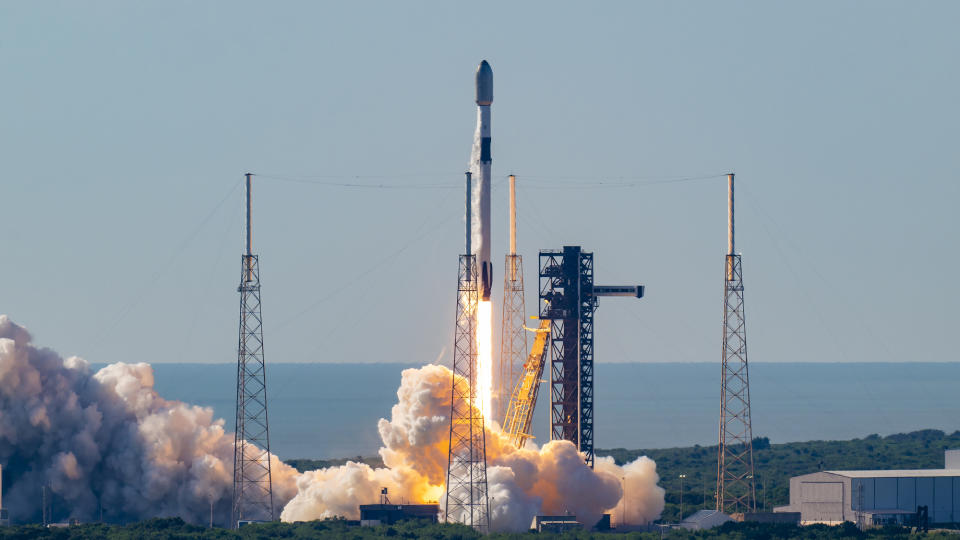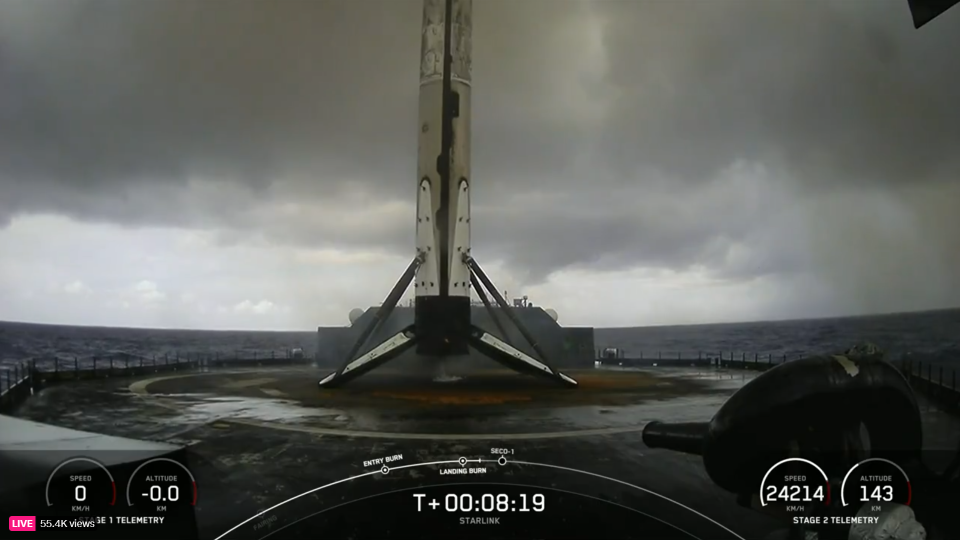When you buy through links on our articles, Future and its syndication partners may earn a commission.


SpaceX launched a new batch of its Starlink internet satellites into orbit with a rocket that, in a rarity for the company, made its maiden voyage on the flight.
The SpaceX Falcon 9 rocket lifted off from a pad at Cape Canaveral Space Force Station in Florida on Tuesday (Aug. 20) at 9:20 a.m. EDT (1320 GMT) carrying 22 Starlink satellites on the company’s Group 10-5 mission. The Falcon 9 soared into a stunning blue morning sky during the launch.
“New Falcon 9 booster debuts by delivering 22 Starlink satellites to orbit,” SpaceX wrote in an update.


Just over eight minutes after launch, the first stage of the Falcon 9 rocket returned to Earth, flying through thick clouds to touch down on SpaceX’s drone ship A Shortfall of Gravitas in the Atlantic Ocean. It was a rare first flight of the Falcon 9 for SpaceX, which typically uses veteran pre-flown rockets for Starlink (and other) launches.
Related: Starlink satellite train: how to see and track it in the night sky


RELATED STORIES:
— SpaceX launches 21 Starlink satellites to orbit from Florida (video, photos)
— SpaceX bounces back from Falcon 9 failure with successful Starlink launch (video)
— Rare SpaceX rocket failure shows exactly why NASA wants 2 commercial options to fly astronauts to ISS
The 22 Starlink satellites that launched Tuesday join SpaceX’s vast megaconstellation of high-speed internet satellites in orbit as the company works to provide broadband access around the world. To date, SpaceX has launched more than 6,800 Starlink satellites of one version of another, according to a database by astrophysicist Jonathan McDowell, though some of these spacecraft have already been retired.
SpaceX’s next major scheduled launch is expected to be the Aug. 26 flight of Polaris Dawn, a private human spaceflight backed by American billionaire Jared Isaacman. The mission will launch Isaacman and a crew of three others on a five-day orbital mission to perform the world’s first private spacewalk.
